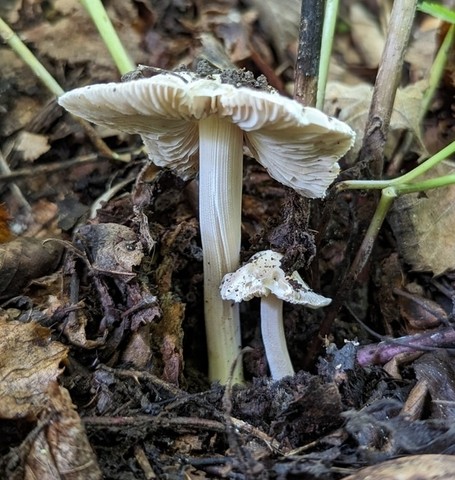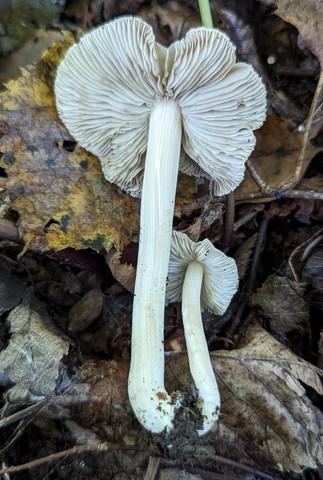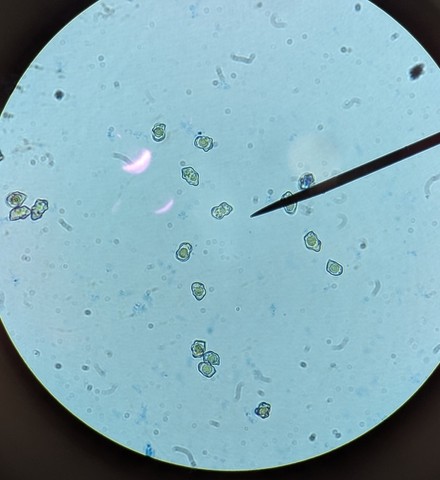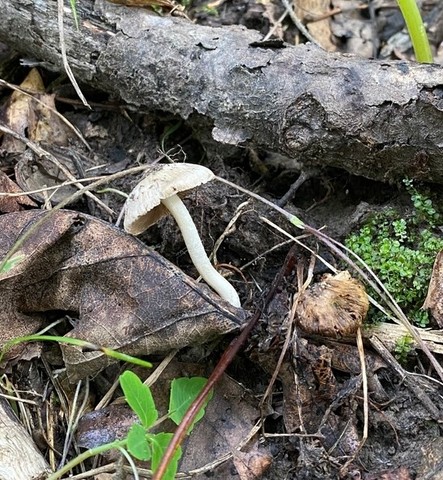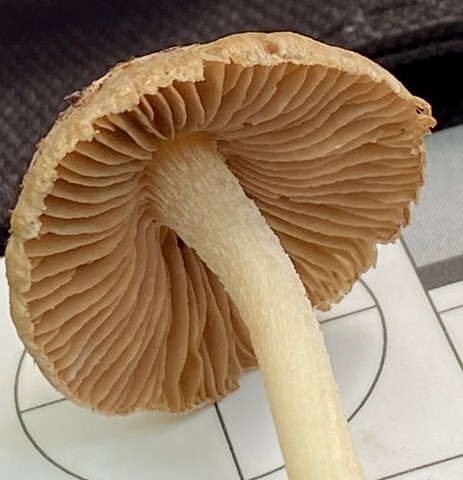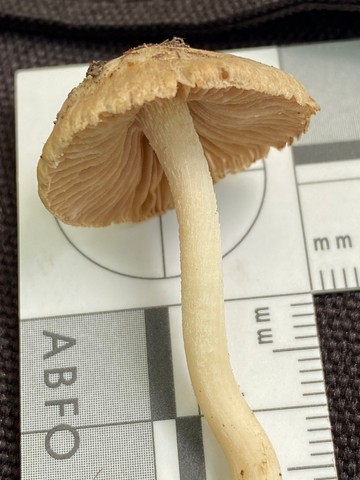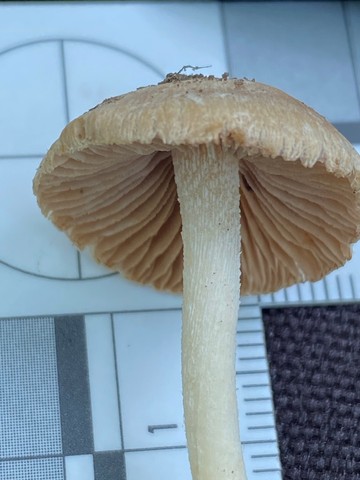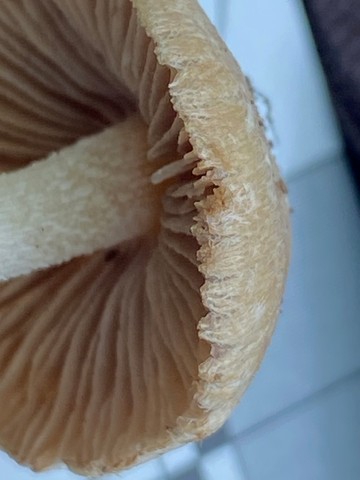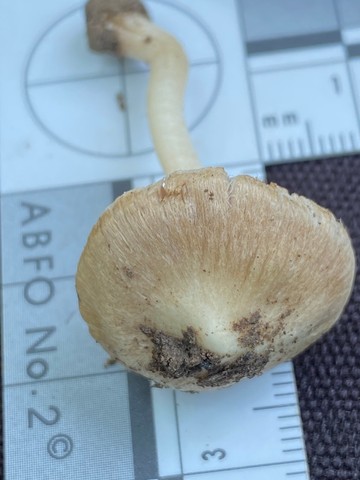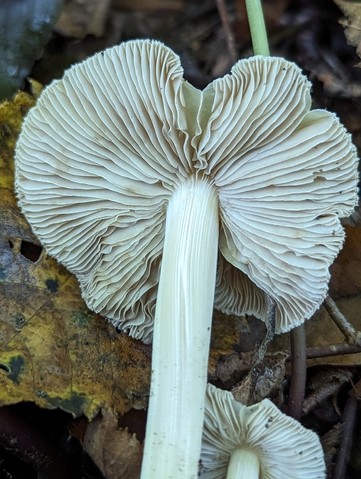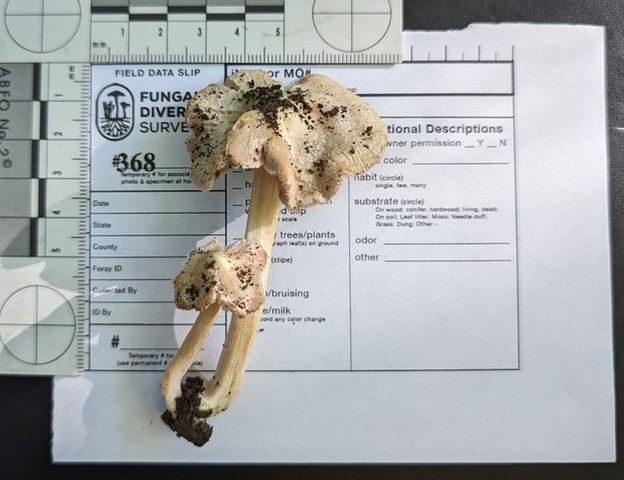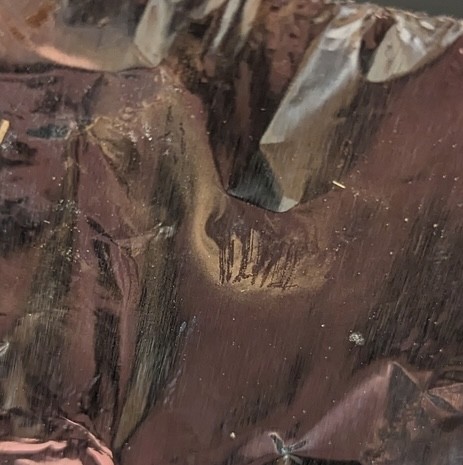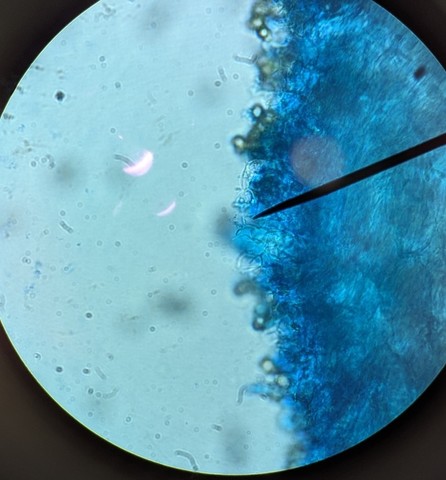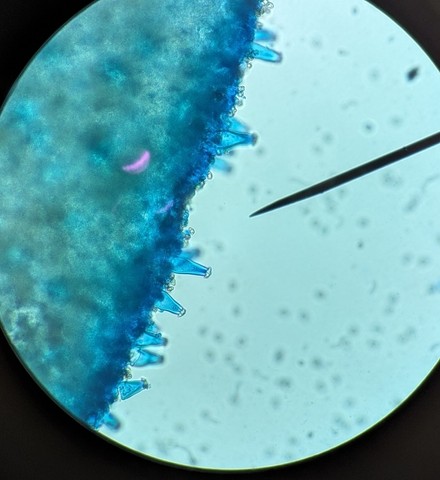Inocybe velicopia
Life > Fungi > Basidiomycota > Agaricomycotina > Agaricomycetes > Agaricomycetidae > Agaricales > Agaricineae > Inocybaceae > Inocybe
Description
Inocybe velicopia is a mycorrhizal mushroom that associates with Oak, Hickory, Beech, and Chestnut trees and can be found in the summer and fall. It is distributed east of the Rocky Mountains and Costa Rica.
Members of these genus are known to be toxic. The toxin in question called muscarine. Please review the list of symptoms below.
The symptoms usually occur within 15-30 minutes of ingestion, and are focused on the involuntary nervous system. They include excessive salivation, sweating, tears, lactation (in pregnant women), plus severe vomiting and diarrhea. These symptoms may be accompanied by visual disturbances, irregular pulse, decreased blood pressure, and difficulty breathing. Victims normally recover within 24 hours, but severe cases may result in death due to respiratory failure. Atropine is a specific antidote, but must be administered by a physician. Dogs are particularly susceptible to the toxin muscarine. (Beug, 2024)
If you or someone you know has been poisoned by consuming wild mushrooms, call 9-1-1 and get the individual medical attention IMMEDIATELY. Afterwards, please report poisonings to the North American Mycological Association to contribute to our understanding of wild mushroom safety.
Observations
July 26th, 2023 Indian Cave State Park

255
- Growing gregariously in open mixed oak/hickory woodland above creek.
- Nearby Trees: Northern Red oak, Chinkapin Oak, Bur Oak, Ash, and Shagbark Hickory.
- Cap conical with whitish to gray-brown velar tissue on the top.
- Lamellae notched with decurrent tooth, slightly serrated, and marginate.
- Stipe white, fibrulose, waving, and easily cracking longitudinally.
Additional Info
- Pileipellis easilly pealing 3/4 to the center.
- Smell reminiscent of Agaricus bisporus.
- Taste: not distinctive
GTCGTAACAAGGTTTCCGTAGGTGAACCTGCGGAAGGATCATTATCGAATAAACTTGATCAGGTTGTTGCTGGCCTTTTCGAAGGCATGTGCACGCTTGTCATCTTTATTTCTCCAACTGTGCACATGTTGTAGACCATGGATGTCGTTGCTTAATAGCAGATTTGAGAAGTGCTTTAGCTTTCTCTTATGAGGTCTATGTTATCCATCTTTTACACACTGTTTTAGAATGTTTATTATGGGAAAAATACAAATGTACAACTTTCAGCAACGGATCTCTTGGTTCTCGCATCGATGAAGAACGCAGCGAAATGCGATAAGTAATGTGAATTGCAGAATTCAGTGAATCATCGAATCTTTGAACGCAACTTGCGCTCCTTGGTATTCTGAGGAGCATGCCTGTTTGAGTGTCATTAAACTTCTTCTCAACCCATCCAGTTTCATCTGTGCGTGGGCTTTTGGATGTTGGGGGCTTGCTGGTTTCCATTTTCCCAGCTCTCCTGAAAAGCATTAGCGGCATCTGGGCTGCTTGCAGGTGTGATAACTTGTCTACACCTTTGCAGCGGCTGCATCTGTGCTGCTCTTATTAGTGGGCATTGATGAAATTTGACCTCAAATCAGGTAGGACCACCCGCTGAACTTView MycoMap DNA Results
September 11th, 2023 Indian Cave State Park
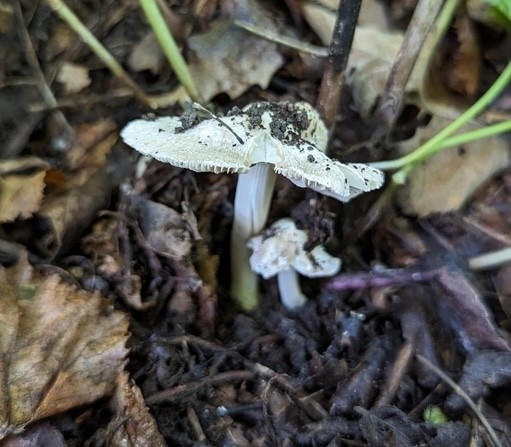
#368
- Growing from soil in mixed oak/hickory woodland.
- Caps umbonate, fibrulose and splitting near the margin.
- Gills notched, marginate with white edges, and with numerous partial gills.
- Stipe white, with shallow longitudinal ridges attached to decurrent teeth of lamellae.
Additional Info
- Spore Print: brown
- Microscopy: Spores irregular and wavy, pleurocystidia large thick-walled. Basidia with 4 sterigmata.
GTCGTAACAAGGTTTCCGTAGGTGAACCTGCGGAAGGATCATTATCGAATAAACTTGATCAGGTTGTTGCTGGCCTTTTCGAAGGCATGTGCACGCTTGTCATCTTTATTTCTCCAACTGTGCACATATTGTAGACCATGGATGTCGTTGCTTAATAGCAGATTTGAGAAGTGCTTTAGCTTTCTCTTATGAGGTCTATGTTATCCATCTTTTACACACTGTTTTAGAATGTTTATTATGGAAATGTACAACTTTCAGCAACGGATCTCTTGGTTCTCGCATCGATGAAGAACGCAGCGAAATGCGATAAGTAATGTGAATTGCAGAATTCAGTGAATCATCGAATCTTTGAACGCAACTTGCGCTCCTTGGTATTCTGAGGAGCATGCCTGTTTGAGTGTCATTAAACTTCTTCTCAACCCATCCAGTTTCATCTGTGCGTGGGCTTTTGGATGTTGGGGGCTTGCTGGTTTCCATTTTCCCAGCTCTCCTGAAAAGCATTAGCGGCATCTGGGCTGCTTGCAGGTGTGATAACTTGTCTACACCTTTGCAGCGGCTGCATCTGTGCTGCTCTTATTAGTGGGCATTGACGAAATTTGACCTCAAATCAGGTAGGACTACCCGCTGAACTTView MycoMap DNA Results
References
Beug, M. (2024, April 23). Mushroom Poisoning Syndromes - North American Mycological Association. North American Mycological Association. https://namyco.org/interests/toxicology/mushroom-poisoning-syndromes/#muscarine
Matheny, P. B., Corrales, A., Graddy, M. G., Halling, R. E., Kalichman, J., Kudzma, L. V., ... & Walker, N. C. (2022). A revision of the Inocybe grammata group in North America including four new taxa. Brittonia, 74(4), 436-464. https://par.nsf.gov/servlets/purl/10418330
Created October 14, 2025 at 3:03 PM
